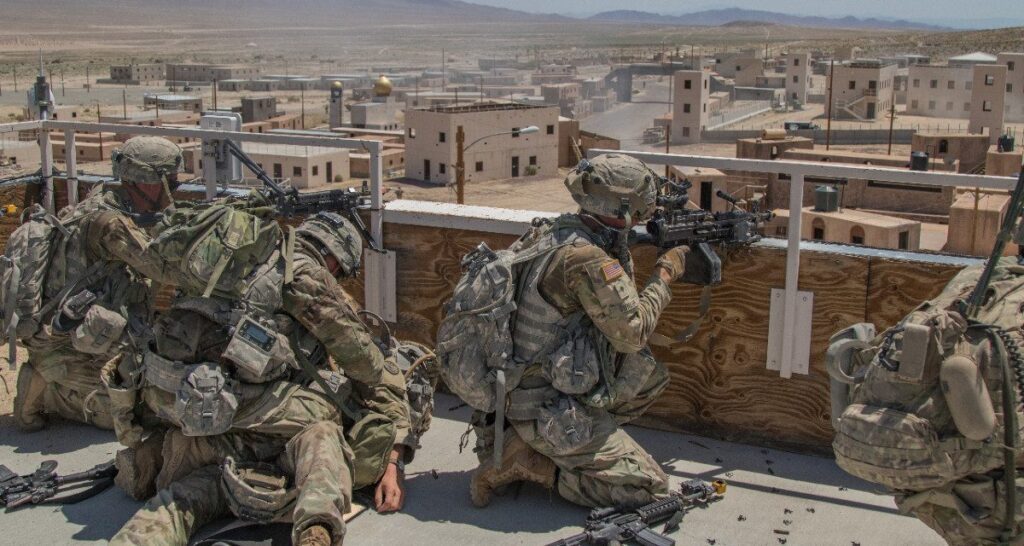Urban warfare has been a significant form of combat throughout history, with battles like Stalingrad in World War II and Fallujah in the Iraq War highlighting the brutal nature of fighting in densely populated areas. This article delves into the tactics and strategies used in urban warfare, from the fierce street fighting in Stalingrad to the modern challenges faced by soldiers in Fallujah. The battles in these cities demonstrate the importance of adapting tactics to the complexities of urban environments, where close-quarters combat, limited visibility, and the presence of improvised explosive devices pose significant challenges. Learning from past battles is crucial for military forces to navigate the deadly terrain of urban areas successfully.
Urban warfare has been a prevalent form of combat throughout history, with notable battles such as Stalingrad in World War II and Fallujah in the Iraq War showcasing the brutal nature of fighting in densely populated areas. In this article, we will explore the tactics and strategies used in urban warfare, from the fierce street fighting in Stalingrad to the modern-day challenges faced by soldiers in Fallujah.
Stalingrad: The Bloody Battle for the City
The Battle of Stalingrad, fought between August 1942 and February 1943, was one of the deadliest battles in history, with estimates of over two million casualties. The city of Stalingrad, located on the Volga River, was a strategic stronghold for both the Germans and the Soviets, leading to intense fighting for control of the city.
In the urban environment of Stalingrad, both sides were forced to adapt their tactics to the close-quarters combat and limited visibility that characterized the city’s streets and buildings. The Germans utilized their superior firepower and trained snipers to pick off Soviet soldiers from a distance, while the Soviets relied on their knowledge of the city’s layout and network of trenches and tunnels to mount effective defenses.
The use of tanks and artillery in the narrow streets of Stalingrad also posed unique challenges for both sides, with buildings providing cover and obstacles to maneuvering heavy equipment. The Germans famously employed the tactic of “mouse-holing,” where they would blast holes through walls to create passages for their infantry to advance through the city.
Fallujah: The Modern-Day Urban Warfare
Fast forward to the modern era, and urban warfare continues to be a central feature of conflict in places like Fallujah, Iraq. The battles for Fallujah in 2004 and 2006 saw US forces facing off against insurgents in a city known for its narrow streets and tight alleys, making traditional military tactics difficult to apply.
The US military adopted a variety of tactics to navigate the complex terrain of Fallujah, including the use of specialized urban warfare units, such as the Marine Corps’ Urban Warfare Training Center, which trained soldiers in close-quarters combat and room-clearing techniques. Soldiers were also equipped with advanced technology, such as night-vision goggles and thermal imaging devices, to aid in navigating the city’s darkened streets and buildings.
One of the key challenges faced by US forces in Fallujah was the presence of improvised explosive devices (IEDs), which insurgents used to target military vehicles and foot patrols. In response, soldiers developed specialized counter-IED tactics, such as conducting thorough sweeps of buildings and roads before advancing, and employing mine-clearing vehicles to neutralize threats.
Conclusion
In conclusion, urban warfare presents a unique set of challenges for military forces, requiring soldiers to adapt their tactics and strategies to the complex and unpredictable environment of a city. Battles like Stalingrad and Fallujah have demonstrated the high casualties and intense fighting that can result from urban warfare, but also the importance of training, technology, and innovation in overcoming these challenges.
As conflicts continue to erupt in urban areas around the world, the lessons learned from past battles will continue to inform the strategies and tactics used by military forces to navigate the deadly terrain of the city. From the rubble-strewn streets of Stalingrad to the booby-trapped alleys of Fallujah, urban warfare remains a formidable challenge for soldiers, requiring courage, skill, and adaptability to emerge victorious.
